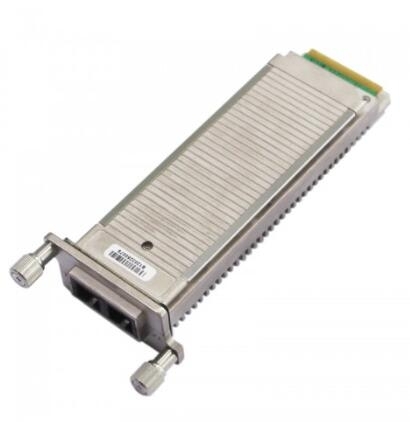- Related articles
- All Cisco DWDM-XENPAK-31.12's information (List price, Specs, Datasheet PDF, Compatibility
- The difference between XENPAK and SFP
- Optical Transceivers for Cisco WS-C2960XR-48LPD-I Switch
- All Cisco 15454-GBIC-LX's information (Specs, Datasheet PDF, Compatibility matrix)
- Optical Transceivers for Cisco WS-C3560V248TSS-RF Switch
- The difference between SFP+ and CSFP
- All Cisco SFP-10G-LRM’s Information (Overview, Features, Datasheet PDF, Price, Specificati
- What Is GYFTY Fiber Optic Cable?
- The New Easy-to-Use Managed Switches-Cisco 350 Series
- Optical Transceivers for Cisco WS-C2960X-48TS-LL Switch

Definition:
XENPAK is a multisource agreement (MSA), instigated by Agilent Technologies and Agere Systems, that defines a fiber-optic or wired transceiver module which conforms to the 10 Gigabit Ethernet (10GbE) standard of the Institute of Electrical and Electronics Engineers (IEEE) 802.3 working group. The MSA group received input from both transceiver and equipment manufacturers during the definition process. XENPAK has been replaced by more compact devices providing the same functionality.
The XFP (10 Gigabit Small Form Factor Pluggable) is a standard for transceivers for high-speed computer network and telecommunication links that use optical fiber. It was defined by an industry group in 2002, along with its interface to other electrical components, which is called XFI. XFP modules are hot-swappable and protocol-independent. They typically operate at near-infrared wavelengths (colors) of 850 nm, 1310 nm or 1550 nm. Principal applications include 10 Gigabit Ethernet, 10 Gbit/s Fibre Channel, synchronous optical networking (SONET) at OC-192 rates, synchronous optical networking STM-64, 10 Gbit/s Optical Transport Network (OTN) OTU-2, and parallel optics links. They can operate over a single wavelength or use dense wavelength-division multiplexing techniques. They include digital diagnostics that provide management that were added to the SFF-8472 standard. XFP modules use an LC fiber connector type to achieve higher density.
Difference between XENPAK and SFP:
XENPAK modules were supplied for physical layer interfaces supporting multi-mode and single mode fiber optic cables and InfiniBand copper cables with connectors known as CX4. Transmission distances vary from 100 metres (330 ft) to 80 kilometres (50 mi) for fiber and up to 15 metres (49 ft) on CX4 cable. Newer XENPAKs using the 10GBase-LX4 standard operated using multiple wavelengths on legacy multi-mode fibres at distances of up to 300 metres (980 ft), eliminating the need to reinstall cable in a building when upgrading certain 1 Gbit/s circuits to 10 Gbit/s.
The SFP transceiver is compliant with the specifications the SDH/SONET/IEEE802.3 and the Small Form-Factor Pluggable (SFP) Multi-Source Agreement (MSA) and SFF-8472. Its’ reliability is benefitted by virtue of being hot-pluggable. Further, it incorporates the latest 3.3 VDC compatible transceiver technology including an 850nm/1310nm/1550nm FP/DFB LD transmitter as well as a convenient LC-Duplex optical interface.
Conclusion:
XENPAK is a highly integrated, serial optical transponder module for high-speed, 10Gbit/s data transmission applications. It is designed to transmit and receive optical data of link length of 300M, 10km, 20km, 40km, up to 80km. XENPAK 10GB solution include dual fiber XENPAK, CWDM XENPAK and DWDM XENPAK modules which enable high port densities for 10 GbE systems. A 70 pin electrical connector and a duplex SC connector optical interface assure that connectivity is compliant to the XENPAK MSARev.3.0.
XFP offers diverse 10 Gigabit Ethernet and packet-over-SONET/SDH connectivity options for data hubs, enterprise wiring closet, and service provider transport applications. XFP Transceiver supports 10GBASE Ethernet and OC-192/STM-64 data rates and supports the digital optical monitoring capability. 10G XFP serial includes dual fiber XFP, WDM XFP, CWDM XFP and DWDM XFP transceiver with a variety of compatibility. XFP as a hot-swappable input/output device, it is easier to be plugged into a XFP port of routers or switches to link the port with the network.







































































